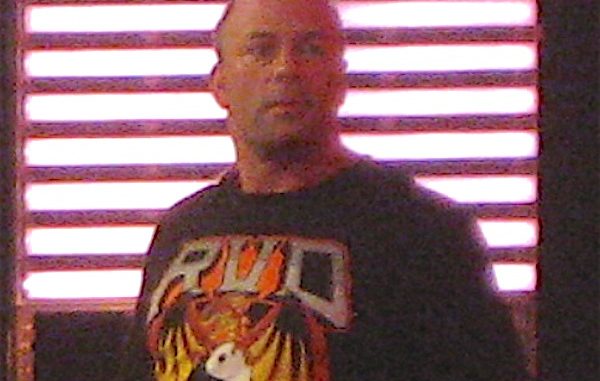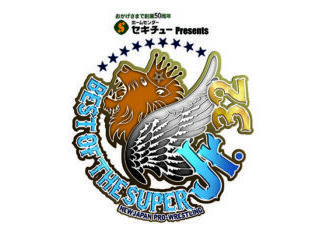
SPOTLIGHTED PODCAST ALERT (YOUR ARTICLE BEGINS A FEW INCHES DOWN)...
After an absence dealing with some family health issues, I’m back looking at WWE Netwo… oops I mean Peacock.
I hadn’t gone over to Peacock during the initial switchover as had personal obligations elsewhere, but when I finally started I was flabbergasted at just what a pathetic and awful streaming service Peacock is in terms of practical use. Even when plugged in via Ethernet, Peacock routinely has sluggish performance and considerable lag on a variety of devices. On a test of a smart TV and a desktop both connected via Ethernet on “Hell in a Cell” I saw a time differential of nearly 40 seconds. And these devices were both in the same home.
On top of the bad performance issues, the organization of the WWE content on Peacock is not good. Trying to find certain content is a bit of a chore to find even when it is on Peacock. While a lot of the old Network content had been put on Peacock, the lackluster organization is going to make more content even harder to find.
WWE Icons
“Lex Luger”
The Icons documentary on Lex Luger was of particular interest as Lex is often an overlooked player in wrestling history when WWE is presenting it. When he is featured, it is generally in an unfavorable light — be it as an underachiever or a distressed voice in the 911 calls regarding the death of Miss Elizabeth. WWE did plenty of social media advertising and even had a commercial on TV for the debut of this new episode of Icons on the Fourth of July. If you went looking it for today, it is not there. For reasons currently unknown, WWE has decided not to air the Lex Luger episode of Icons at this time.
“Rob Van Dam”
One of the appealing aspects of the Icons series is the focus on talent that has not been covered by WWE repeatedly. I’m not aware of a produced WWE documentary on Van Dam, as his sole DVD release was a collection of matches that he had introductions for and had no biographical documentary.
The Icon series does have a format of starting with a brief glimpse of the wrestlers growing up, in this case, they do interview Rob’s sister, Terri Szatkowski. Rob was very gifted in academics at a young age but eventually averaged out as Rob said he couldn’t abide by a “demand for conformity”. Rob also said he never got into sports as a kid and his sister believes that is because he didn’t want to be told what to do.
Rob claims that the first time he heard about pro wrestling he thought it was ridiculous but after he first watched it he was hooked. In particular, RVD cites a beat-down angle with the Iron Sheik and Corporal Kirshner and that from then on he knew he wanted to become a professional wrestler. The documentary does talk about the clip of Rob doing a segment kissing the feet of the Million Dollar Man at an event at the Kellogg Center. That clip has been shown a bit over the years, and I never realized this wasn’t actually on TV and was just from a house show.
In high school, Rob focused everything in the pursuit of being a pro wrestler with fitness and stretching. He did join the wrestling team for his school but Rob was insulted that the coach wanted him to cut weight from 165 to 135 as he saw that as counter-productive to his goal of being a pro wrestler so he quit.
RVD states one of the most important days in his young life was when he and his friends saw a house in Battle Creek that had a ring set up in the backyard. The owner of the ring was Kit Lykins, a kickboxer and a promoter of kickboxing events. The documentary interviews Lykins and Lykins says he let them practice wrestling in the ring as long as Rob and his friend learned karate. Van Dam says he excelled at kickboxing and there is some great old footage of RVD, in Zubaz, in a kickboxing match at a nightclub. Lykins said he was disappointed the Rob didn’t pursue kickboxing further as he felt he was a natural but understood wrestling was where Rob’s heart was.
While Rob was working at a grocery store he met powerlifter Tom Bennett, who was training with The Sheik at the time. Bennett told Rob about the school and Rob went immediately. Sabu is interviewed for the doc and talks about the early days of training with Rob. Sabu credits Rob with teaching Sabu how to do a backflip. Rob claims that the Sheik did not “smarten up” trainees and were trained as if everything was a shoot which made lots of other wrestlers unwilling to work with Sheik trainees.
While working down in Florida in ’90 and ’91, Rob credits Ron Slinker with comparing Rob to action star Jean-Claude Van Damme. Slinker also encouraged Rob to claim to be Jean-Claude’s cousin and to start to use a Dutch accent. On a trip to Jamaica in ’91 Rob credits Jimmy Del Ray with giving Rob his first joint. While his first experience with marijuana wasn’t good, Rob noted that a lot of the other athletes he looked up to were cannabis users so he began to investigate further.
Van Dam’s tenure in All-Japan is covered next including a new interview from Dory Funk Jr and Dory puts Rob over big. Rob’s WCW career as Robbie V is just briefly covered mainly showing clips of matches with Stunning Steve Austin and Kevin Nash. Rob said he didn’t hesitate about leaving WCW because Giant Baba had guaranteed there was always a spot for him in All-Japan.
Paul Heyman talks about how after seeing RVD in some All-Japan tapes that he had to have him. Bill Alfonso is interviewed and is almost unrecognizable thanks to some great new teeth. Sabu claims he lobbied hard for Van Dam just so he could have a feud with RVD. Van Dam credits ECW with allowing him to bring all of his skills together.
Rob not being booked on the first ECW Pay-Per-View, Barely Legal, is covered in depth. Paul Heyman states in this documentary that the reason he didn’t book Rob was that he wasn’t sure how long Rob would be in ECW. Rob says that during this time he was offered a deal from Eric Bischoff that was for considerably more money, but decided to stay due to a feeling he could be an even bigger deal due to the story they were about to tell. Vince McMahon talks a little about the RVD appearances in ’97. Vince said they were interested in bringing RVD to WWF at the time. Bruce Prichard claims he didn’t end up coming in because Rob was exploring his creativity in ECW.
Capturing the Television Championship from Bam Bam Bigelow is talked about in-depth and with good reason as that television title reign is quite possibly the greatest of any title reign of that era in North America. Sadly, the iconic Jerry Lynn feud is not covered, which isn’t surprising considering Lynn’s position in AEW. Heyman says the only reason that Van Dam lost the TV title was that he broke his ankle as Paul never planned to have Rob lose the belt. An interesting note is that Van Dam finished the match he broke his ankle in and still did a five-star frog splash off the top rope in that match.
Bubba Ray Dudley credits the ankle injury of Rob Van Dam as putting accelerant on the demise of ECW. That’s hard to argue because RVD was their top act by far and not having your top act can only be detrimental to your business. Paul Heyman states that when ECW was suffering financially that Rob wouldn’t cash his paychecks. Rob said that due to the slower decline of ECW, he was able to handle it a little better than if it would have just shut down abruptly. RVD says ECW was his favorite part of his career to the surprise of no one.
Rob talks about his decision to join WWF in 2001 and said there wasn’t a choice to be a star in North America outside of WWF, which is correct. Rob said he had no idea what any sort of plan was until Tommy Dreamer tossed him an ECW shirt before they did their run-in. Rob said he was not happy at all about the decision to bring him and ECW into the invasion as heels. Rob said he was frustrated at their stubbornness to have him as heels despite him getting great reactions from the crowd.
The documentary talks about how RVD took the company by storm and was massively over with the fans. The documentary portrays that he came in and was in that top tier from the get-go and doing what they believed he could do in ’97. Seems like a bit of retconning considering during the Invasion he was only the WWF Hardcore champion and his one PPV main event of the time was a triple threat with Steve Austin and Kurt Angle that seemed to be designed to get fans to keep quiet about giving RVD a chance.
Brian Gewirtz talks about how the casual nature of Rob backstage was off-putting to a fair amount of decision-makers. Gewirtz said backstage he was probably too much of a normal person to be looked at as a top guy. Rob said he was happy to be over with the fans, but he felt he was constantly being told to change by some people backstage in WWE. Heyman said it is a failure of WWE that he wasn’t a bigger star in WWE during his run.
Rob talks about pitching One Night Stand to Vince. Vince refers to ECW One Night Stand as “interesting.” Lots of ECW alumni talk about how One Night Stand was the closure a lot of them needed — at least until the next reunion show came around.
Rob winning the Money in the Bank is covered next and despite winning, Rob didn’t believe he would end up winning the World Championship. Van Dam said the announcement of the new ECW gave him a new excitement for his career and felt he was the guy to lead that new brand. RVD says that defeating John Cena at One Night Stand 2006 felt great because he always stayed true to himself and was able to reach the pinnacle.
The drug arrest with Van Dam and Sabu is covered next. RVD admits he thought he was above getting in trouble for it. Vince states he was disappointed and decided immediately to take both championships off of Rob. Sabu and Dreamer both said they felt Rob getting in trouble crushed any hope for the new ECW. Rob cites being burned out spiritually as the key component to him leaving in 2007 when his contract came up. Rob briefly talks about being TNA and said it was a good time.
Rob’s time in 2013 and 2014 is talked about and Rob said 2013 was great but that 2014 he just didn’t care and he was just taking paychecks. In 2016, he got divorced from his wife Sonya. Shortly after his divorce, Rob’s father and dog passed away and he spiraled downwards. Rob said he got big into drinking at this time and Tommy Dreamer states he was very concerned. Rob credits meeting his new fiancée as helping bring him out of the darkest period of his life.
Rob then talks about building his CBD products company. The messages about cannabis in this documentary are all over the place. Finally, the last thing covered is him being inducted into the WWE Hall of Fame earlier this year.
Overall this documentary seems a bit underwhelming and could cover a lot more about the truly innovative Rob Van Dam. This episode of Icons is largely a surface-level look at Rob’s career and doesn’t go very in-depth except for a few instances like his TV title reigns and getting stripped of the dual championships. The bright side of these docs is getting a look at someone that WWE has never done such a feature on before and I hope we get more like this in future seasons of Icons if they occur.
CATCH-UP: WWE NETWORK REVIEWS: Sasha Banks on the Broken Skull Sessions and New Day remembering Jon Huber



Leave a Reply
You must be logged in to post a comment.